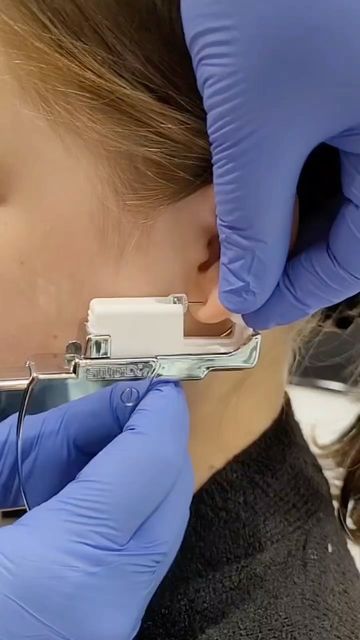Practice of creating an opening in the skin
This form of body modification has been practiced for centuries and can be done on various parts of the body, including the ears, nose, eyebrows, lips, tongue, navel, and more. Body piercing is often chosen for personal expression, cultural or religious reasons, aesthetics, or simply as a form of self-adornment.
Process of Body Piercing
Consultation
Before getting a piercing, it’s important to have a consultation with a professional piercer. During this consultation, you’ll discuss the type of piercing, jewelry options, aftercare, and any potential risks or concerns.
Preparation
The piercer will sterilize the area to be pierced and mark the placement of the piercing using a sterile marker. They’ll also provide information on how to care for the piercing during the healing process.
Piercing
Using a sterile needle or a piercing gun (for some earlobe piercings), the piercer will quickly insert the jewelry through the opening. The procedure is usually quick, and the initial pain can vary depending on the location of the piercing.
Jewelry Insertion
Once the needle is through, the jewelry is immediately inserted into the piercing. High-quality, hypoallergenic jewelry is typically used to minimize the risk of irritation or infection.
Advantages of Body Piercing
Self-Expression
Body piercings are a popular form of self-expression, allowing individuals to showcase their personal style, creativity, and individuality.
Cultural and Religious Significance
Many cultures and religions have practiced body piercing for centuries as part of their traditions, rituals, or spiritual beliefs.
Fashion and Aesthetics
Body piercings can enhance the aesthetics of the body and complement an individual’s fashion choices. They can be a unique and eye-catching accessory.
Emotional Significance
Piercings can hold sentimental value, symbolizing important milestones, relationships, or personal growth.
Increased Confidence
For some individuals, body piercings can boost confidence and self-esteem by allowing them to feel more comfortable in their own skin.
Community and Connection
The body modification community can provide a sense of belonging and camaraderie among individuals who share similar interests.
Temporary or Permanent
Depending on personal preferences, some piercings can be removed, allowing individuals to switch up their look or revert to a more conventional appearance if desired.
Healing Process
The healing process of body piercings can be a learning experience, teaching individuals patience, responsibility, and proper self-care.
It’s important to note that while body piercing offers many advantages, there are potential risks and considerations to be aware of. Improper piercing techniques, inadequate aftercare, and poor-quality jewelry can lead to complications such as infection, scarring, allergic reactions, and prolonged healing times. To minimize risks, it’s crucial to choose a reputable and experienced professional piercer, follow proper aftercare instructions, and opt for high-quality, hypoallergenic jewelry.
